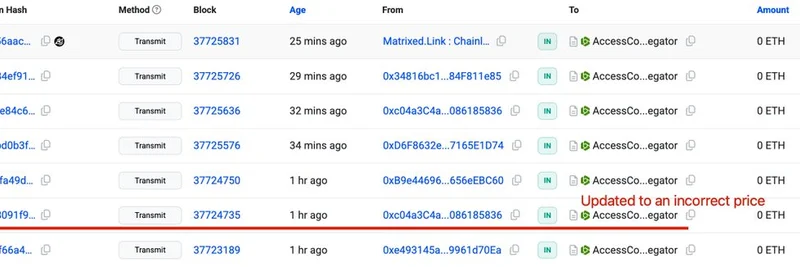RyuJin (RYU) is an ERC-20 meme token on the Ethereum blockchain designed to power parts of the Omikami ecosystem. Launched on February 3, 2024, the project blends cultural mythos with DeFi utility and plans for gaming, NFTs, and more. The verified Ethereum contract address is 0xca530408c3e552b020a2300debc7bd18820fb42f.
What makes RYU different
- No presale: The launch aimed for fair distribution from day one.
- Zero taxes: 0% buy and sell tax keeps swaps simple and cost-efficient.
- Renounced ownership: The contract is renounced, meaning the deployer no longer controls it. This reduces single-party control and aligns with a community-first model.
- Locked liquidity: 100% of liquidity is locked on UNCX Network, which helps protect against rug-pull style liquidity removals.
- Omikami integration: RYU is positioned as a utility and cultural layer within the broader Omikami vision across DeFi, gaming, and NFTs.
- AI angle: The team highlights AI-driven tools and insights to enhance trading and strategy within the ecosystem.
Tokenomics at a glance
- Total supply: 1,000,000,000,000,000 RYU (one quadrillion)
- Circulating supply: ~963.85 trillion RYU (approximate, varies by source)
- Buy/Sell tax: 0% / 0%
- Liquidity: 100% locked to UNCX
- Contract status: Renounced
Simple explainer:
- Renounced ownership means the original developer has surrendered admin privileges on the token contract, limiting changes to parameters or functions going forward.
- Locked liquidity means the liquidity provider tokens (LP tokens) are locked for a set period, making it harder for anyone to drain the pool.
Ecosystem, roadmap, and utility
The project’s roadmap centers on building culturally inspired, crypto-native experiences:
- P2P gaming: 2D and 3D games rooted in Omikami mythology.
- VR exploration: Immersive VR experiences under consideration.
- Omikami Wallet: A multi-chain DeFi wallet visioned for token and NFT transactions.
- 3D NFTs: Collectibles aimed to bring in-game and cultural elements to life.
- CEX listings: A stated goal to expand visibility via centralized exchange listings over time.
Use cases may include:
- Trading and arbitrage: Speculative trading across volatile markets.
- Staking/lending via third parties: Potential yields if platforms support it (always verify platform risks).
- Ecosystem access and rewards: Participation perks, governance input, and gamified incentives as features roll out.
Ethereum first (and BNB Chain confusion)
Although some chatter mentions BNB Chain, the provided contract address resolves to Ethereum and is recognized as an ERC-20 token. If you see RYU elsewhere, it may be a bridged or wrapped version. To avoid mistakes:
- Always verify the Ethereum contract on Etherscan.
- If exploring other chains, confirm any bridged contract on the relevant explorer (for example, BscScan) and check official channels before transacting.
Market snapshot and performance
Market data for RYU can vary widely across trackers and over time:
- Reported all-time high (ATH): Approximately $0.00000071 (around mid-2024 to mid-2025 based on differing sources)
- Market cap and volume: Figures swing significantly between aggregators, reflecting differences in circulating supply assumptions, liquidity depth, and listing coverage.
What this means for you:
- Expect volatility and discrepancies across data sites.
- Cross-check multiple reputable sources (e.g., CoinMarketCap, CoinGecko, Etherscan liquidity pools) before making decisions.
Where to trade RYU
RYU primarily trades on Ethereum-based DEXs:
- Uniswap V2 (RYU/WETH pair): Popular liquidity hub on Ethereum. Visit Uniswap and paste the contract address to avoid imposters.
- Aggregators and other DEXs: Platforms such as 1inch or SushiSwap may route liquidity when available.
- Pro tip for memecoins: Use GMGN for fast discovery, risk checks, and trading flows. Explore RYU here: https://gmgn.ai/eth/token/fV1R5sZ5_0xca530408c3e552b020a2300debc7bd18820fb42f
Note: The team has mentioned pursuing centralized exchange listings, but availability can change. Always verify you’re using the correct token contract.
How to buy RYU (step-by-step)
- Set up a wallet: Install MetaMask or a similar Ethereum-compatible wallet.
- Get ETH: Buy ETH on a centralized exchange (e.g., Binance, Coinbase) and withdraw to your wallet.
- Swap to RYU:
- On Uniswap, import RYU using 0xca530408c3e552b020a2300debc7bd18820fb42f, then swap WETH/ETH for RYU.
- Or, use GMGN’s RYU page to analyze and route a trade: https://gmgn.ai/eth/token/fV1R5sZ5_0xca530408c3e552b020a2300debc7bd18820fb42f
- Final checks: Confirm slippage, review gas fees, and ensure the tax is 0% as claimed (tools with “security checks” can help flag anomalies).
Community and governance
RYU emphasizes a community-led approach:
- Volunteer admins: The team positions itself as community participants rather than centralized controllers.
- Renounced contract: Reinforces decentralized governance ethos by limiting unilateral changes.
- Social channels: Join community hubs (e.g., Telegram) to keep up with updates, roadmap progress, and ecosystem launches.
Risks to consider
- Market volatility: Meme tokens can swing hard in both directions, driven by sentiment and liquidity.
- Data inconsistencies: Supply counts and market caps may differ across platforms; double-check sources.
- Execution risk: Delays or pivots in gaming, VR, wallet, or NFT features could affect adoption.
- Security: Even with locked liquidity and a renounced contract, users still face phishing, approvals, and bridge risks.
- Chain confusion: If you encounter RYU on non-Ethereum chains, verify any bridged contract carefully before interacting.
Quick FAQ
- Is RYU an Ethereum or BNB token? Primarily Ethereum (ERC-20). Any BNB Chain presence is likely via a bridge; verify addresses on chain explorers.
- What’s the supply? One quadrillion total, with an estimated ~963.85 trillion circulating (varies by source).
- Are there transaction taxes? The project states 0% buy and sell taxes.
- Is liquidity locked? Yes, the team states 100% liquidity is locked on UNCX.
- Can developers change the contract? The contract is renounced, which removes typical admin controls.
Bottom line: RyuJin (RYU) is an Ethereum-first meme token tied to the Omikami narrative, built around zero taxes, locked liquidity, and community-led growth. If you trade it, verify the contract, use reputable tools, and manage risk in a volatile market.



